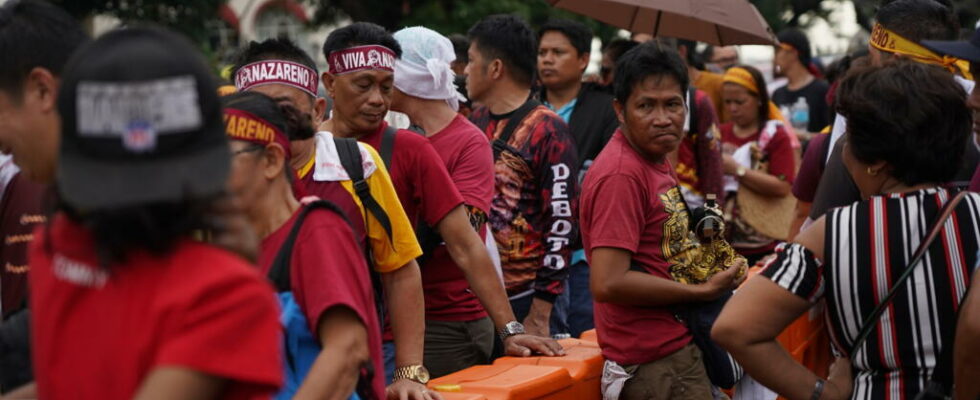This Thursday, hundreds of thousands of Filipinos will pay homage to the Black Nazarene, an ebony-skinned Christ inherited from Spanish colonization. They parade in procession for around fifteen hours behind the statue to the Quiapo church in Manila, where a large mass takes place. According to tradition, believers must touch the feet of the Black Nazarene, expecting a miracle.
2 mins
with our correspondent in Manila, Nemo Lecoq-James
Under the blazing sun, Rose de la Cruz has been waiting for her turn for a while. “ We’ve already been in line for six hours. » Yet there is no question for her to complain. To have the honor of touching the Black Nazarene and for him to fulfill his wishes, one must suffer: “ We give him our penance, to prove that we are motivated, to show that we are honest, believing people. “.
The statue was brought in the 16th century from Mexico and, upon its arrival in Manila, it survived a fire which stained its skin black. Since then, it has crossed the ages, wars and natural disasters. Also the faithful consider it to bring luck. “ I have been devoted to the Black Nazarene for 18 years thanks to the miracles he has produced in my life! », confides another woman to us.
And if Filipinos are so devoted to it, it is because they have a lot in common with the black-skinned Christ. “ It is also the complexion of the Filipinos, the complexion of people who work in difficult trades, in the mines, with their hands. The Black Nazarene is also suffering, so this is another way for Filipinos to identify with him. Especially those who suffer poverty, illness, injustices,” explains Randy Dellosa, psychologist and religion specialist.
The ecclesiastical authorities are expecting more than two million people, coming from all over the archipelago, for this manifestation of Catholic devotion, one of the most important in the world. And because they identify with the black Christ, the pilgrims are ready for anything. The celebration is known to be intense, physical and sometimes even violent. According to the Philippine Red Cross, last year, 700 people were injured.
